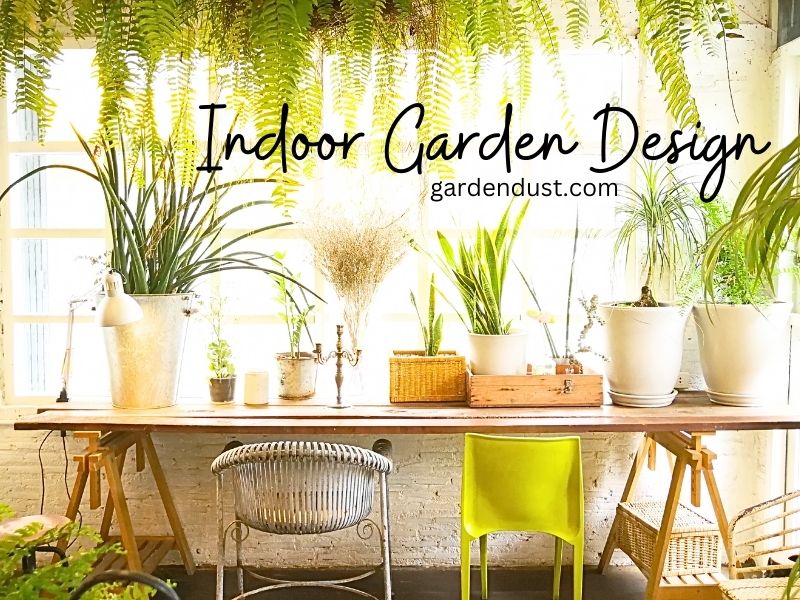Indoor gardens are becoming increasingly popular as people look for ways to bring nature into their homes. Creating an indoor garden can be a challenging task, but with the right tips and techniques, you can create a green oasis that is both beautiful and functional.
In this article, we will explore some of the key considerations when designing an indoor garden. We will cover everything from choosing the right plants and containers to lighting and humidity levels. Whether you are a seasoned gardener or a beginner, these tips and techniques will help you create an indoor garden that will thrive and bring joy to your home.
Choose the Right Plants
The first step in designing an indoor garden is choosing the right plants. When selecting plants for your indoor garden, consider the amount of light and humidity in your home. Some plants require more light than others, while others prefer a more humid environment.
Some popular indoor plants include succulents, which are known for their ability to thrive in low-light and dry conditions. Other popular indoor plants include snake plants, peace lilies, and spider plants. These plants are all easy to care for and can help to purify the air in your home.
If you are looking for plants that require more light, consider adding a few herbs to your indoor garden. Basil, thyme, and rosemary are all easy to grow indoors and can be used in cooking. If you have a sunny window, you may also consider adding a small citrus tree to your indoor garden.
Choose the Right Containers
Choosing the right containers is also an important consideration when designing an indoor garden. When selecting containers, consider the size and shape of the plant, as well as the style of your home.
For small plants, such as succulents or herbs, consider using small terracotta pots or decorative planters. These containers can be easily moved and can add a pop of color to your indoor garden.
For larger plants, such as citrus trees or fiddle-leaf figs, consider using a large decorative planter. These containers can add a dramatic touch to your indoor garden and can be used as a focal point in your home.
If you are looking for a more natural look, consider using woven baskets or macrame plant hangers. These containers can add a bohemian touch to your indoor garden and can be used to hang plants from the ceiling.
Consider Lighting
Lighting is another important consideration when designing an indoor garden. Most plants require a certain amount of light to thrive, and some plants require more light than others.
If you are placing your indoor garden in a room with windows, consider placing your plants near the windows where they can receive natural light. If your home does not have a lot of natural light, consider using artificial light to supplement your plants’ needs.
LED grow lights are a popular choice for indoor gardens. These lights can provide the full spectrum of light that plants need to grow and can be adjusted to meet your plants’ specific needs.
Consider Humidity Levels
Humidity levels are also an important consideration when designing an indoor garden. Some plants require a more humid environment than others, and some homes may be drier than others.
If you live in a dry climate or have a home with low humidity levels, consider using a humidifier to add moisture to the air. This can help your plants thrive and can also benefit your own health.
You can also increase humidity levels by placing a tray of water near your plants. As the water evaporates, it will increase the humidity in the air around your plants.
Maintenance and Care
Once you have designed your indoor garden, it is important to maintain and care for your plants properly. This includes watering, fertilizing, and pruning your plants as needed.
When watering your plants, be sure to use a watering can or a spray bottle to avoid overwatering.
- Watering frequency will depend on the type of plant and the environment in which it is growing. Some plants prefer to dry out between waterings, while others prefer to be consistently moist.
- Fertilizing your plants can also help them to thrive. You can use a liquid fertilizer or a slow-release fertilizer, depending on your plants’ needs. Be sure to follow the instructions on the fertilizer packaging and avoid over-fertilizing, as this can damage your plants.
- Pruning your plants can help to keep them healthy and looking their best. This includes removing dead or yellowing leaves, trimming back overgrown stems, and shaping your plants as needed. Be sure to use clean, sharp pruning shears to avoid damaging your plants.
Final Thoughts
Creating an indoor garden can be a fun and rewarding project. With the right tips and techniques, you can create a green oasis that adds beauty and life to your home.
When designing your indoor garden, be sure to choose the right plants and containers, consider lighting and humidity levels, and maintain and care for your plants properly. By following these tips, you can create an indoor garden that is both beautiful and functional.
Remember, an indoor garden is a living thing, and it will require ongoing care and attention to thrive. With a little patience and dedication, you can create an indoor garden that brings joy and happiness to your home for years to come. Happy Gardening…..






